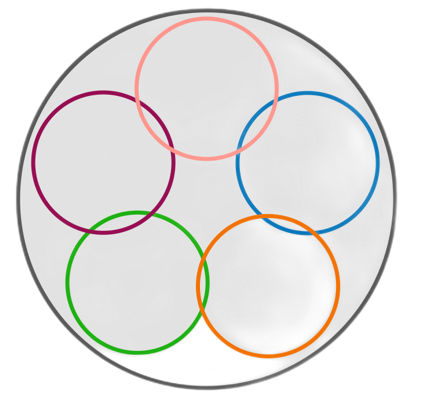Health and fitness can mean many different things to people, for some it will be measured by how many kilos they can squat or bench press, for others their 5k Park Run will be the measure that matters, some may consider being able to play with their grandchildren during school holidays will be a worthy measure and for some others just being able to get out of bed pain free is a win.
Because there are so many possible outcomes there cannot be one perfect training regime, training should always be designed for the individual’s needs and it should be recognised that those needs will change over time. They may become more ambitious over time as fitness improves, or they may be reduced as we age.
The clip illustrates the various parts of Metasomatics, the inclusion of these parts enables a truly holistic approach to health and fitness that can be tailored to the needs of any individual.
Somatics: Somatics is a term derived from the Greek: Soma (body). It was Thomas Louis Hanna (born1928) who coined the term in 1976. He was a philosophy professor and movement theorist. He called his work Hanna Somatic Education. He contended that many negative health effects are due to what he called Sensory Motor Amnesia, that is to say poor neurological communication with skeletal muscles. Essentially many common age-related ailments are not an inevitable consequence of time but the result of poor movement habits.
Unfortunately, because of modern lifestyles, what was once considered ‘age related’ ailments are now occurring in early middle age and in some cases adolescence. The unique aspect of Somatic movement is that the mental focus in every movement is ‘internal’ that is to say becoming conscious of the very fine motor movement involved in every movement. Bringing what was once a subconscious movement habit into the conscious it can be corrected.
Tai Chi: Tai Chi is well known for its general health benefits, but like Somatics its approach is very much about internal awareness of how the body moves at a very fine level. Tai Chi adds a high level of breath coordination which links the mind to the body. What is less known is that traditional Tai Chi contains many rigorous training process to strengthen the body. Most people don’t have the time or interest to learn Tai Chi but some essential aspects can be extracted and included in a regular training regime.
Dao Yin: This is something that you almost certainly won’t have heard of. Dao Yin is a form of Yoga that was developed in China about three thousand years ago. It has connections with both martial arts and meditation. The more energetic aspects were adopted by martial arts practitioners to strengthen and relax their bodies. While the softer and more gentle aspects were used to prepare the body for extensive meditation practise.
Meditation & Breathwork: I’ve listed this aspect mainly for context, the mind - body connection is very important. This is something that when I started my work in physical therapy I wasn’t really aware of. I’d heard it mentioned but it wasn’t something that really entered my consciousness for many years. However over time I started to note how my patients had many things in common, these included poor breathing patterns and persistent stress patterns (anger, poor sleep, physical tension and distorted postures). I started to include aspects of Tai Chi breathwork and meditation in my treatment sessions and noticed how long standing issues resolved with remarkable speed. This ‘discovery’ brought Polyvagal Theory to my attention.
Polyvagal Theory: Polyvagal Theory is (this is very over simplified) a more complete description of the well known fight or flight response. It explains how stress or trauma can become imprinted into our subconscious and have a direct impact on how we carry ourselves in terms of both posture and outlook. Many people experience pain and repeat injuries due to subconsciously held tensions. Using the techniques outlined above, destructive subconscious habits can be resolved.
Physical Therapy: I’ve trained in a number of therapeutic methods over the years and they all have their value. In this context the elements of physical rehabilitation, body function analysis and theoretical knowledge relating to injury pathology are the most relevant.
All of the above aspects can be combined in varying degrees, according to individual needs, to construct a fitness regime that suits the physical and mental make up of any person. This can include running, strength work, flexibility and speed - mobility work.
Diet: All of the above actions would count for very little if diet was not addressed. Modern industrialised society has played havoc with our metabolic health. Many people spend their entire lives in a battle to control their weight and in many cases it is not their fault. The food that they have been raised on has damaged their metabolism and they fight a losing battle to control what they weigh, what they should be focusing on is fixing their metabolism. Follow the link to Diet to read a little about how to fix your metabolism.
The choice is yours.
Go here to find contact information and pricing.



